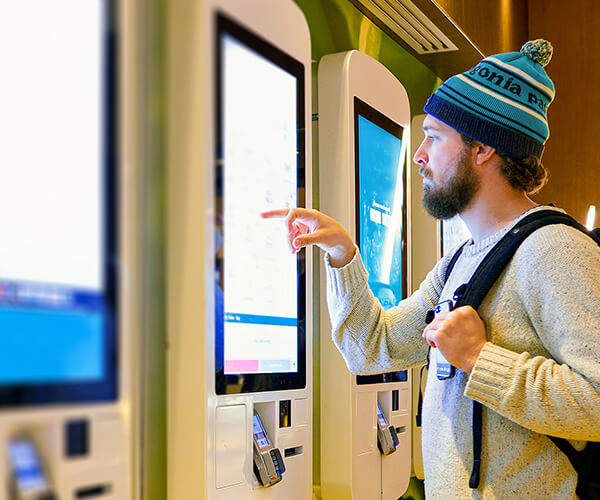Efficiency, speed, quality service
Endless queues, taxpayers who can’t find the office or counter they need, a heightened level of frustration and patience reserves that dwindle by the second: these are the problems public institutions are constantly facing – problems that can be solved efficiently and quickly by implementing queue management solutions.
These solutions transform an environment almost instantly associated with delays, impatience and wasted time into one where every step and action is carefully coordinated and synchronized to create an environment where taxpayers enjoy efficient service and save time, and clerks focus more on resolving requests and less on organizing the flow of people.
Use queue management solutions (such as order slips) to streamline traffic within the facility and direct people to relevant offices.
Information displayed in real time on all digital screens in the institution and updated remotely according to the actions of officials dealing with requests.
Complement the registration process with easy-to-use and easy-to-deploy kiosk-type receipt printing systems and machines.
Avoids overcrowding and queues, improving the quality of service and reducing waiting time.
For taxpayers, any contact with public institutions implies a problem to be solved. For civil servants any contact with taxpayers should involve solving that problem. In these interactions there should be no room for delays, chaos and unhappy queues.
Queue management solutions for public institutions create a framework in which, from the first steps into the institution, everything is carefully planned and directed, ensuring a quick and efficient solution to every request.


Any applicant entering a public institution needs 2 quick pieces of information: where they need to go and which queue they need to be in. Ticketing solutions are the ones that answer both questions, creating a well-organised and up-to-date real-time starting point.
The user’s first action is to access the kiosk at the entrance to select the area of interest and support they need. He can make these selections via the digital screen, and the machine instantly issues him the order form with the relevant information and assigns it to a clerk.
This way the taxpayer does not block access to the premises, does not waste time trying to get information from other officials by interrupting their normal workflow and does not start interacting with the institution at a point where frustration has already set in. He has all the information he needs at his fingertips to start solving his problem.
Endless waiting is one of the main causes of running out of patience when it comes to interacting with any public institution. Queue management solutions turn this wait into a real-time one by implementing digital screens.
They continuously display the number of vouchers that are currently being resolved by the actions of the responsible official. Settling a voucher means that the next number can be served and can move forward. This avoids crowding a counter with the next applicants while the clerk in question has not finished resolving the initial request.
Also, displaying the numbers in real time allows taxpayers to get an idea of how much time they will spend in the institution and to see the progress that is being made with each completed request.




One of the main causes of spending a long time in a public institution is the lack of information: taxpayers who do not know where to go create bottlenecks at the main counters closest to the entrance just because they need some information, wasting time in line to ask a simple question.
Kiosks implemented in public institutions address this shortage by serving both as a source of information and a dispenser of order forms. Each person entering the institution consults the digital screens in the kiosk, selects the purpose of their visit, the software directs them to the relevant desk/desk, and the special printer integrated into the structure issues them with the order form needed to access the desired service.
Implementing ticketing solutions for public institutions means shorter waiting times, reduced congestion, well-defined routes for taxpayers and more efficient work for officials.
By implementing well-established steps (selecting the purpose of the visit, picking up the ticket, going to the relevant counter/desk, finding out the status of the pending resolution, accessing the desired service), taxpayers know exactly what they need to do, get their problems solved faster, and clerks no longer have to interrupt their work to direct traffic to relevant areas and clear the entrance, and focus more on the person they are trying to help.

